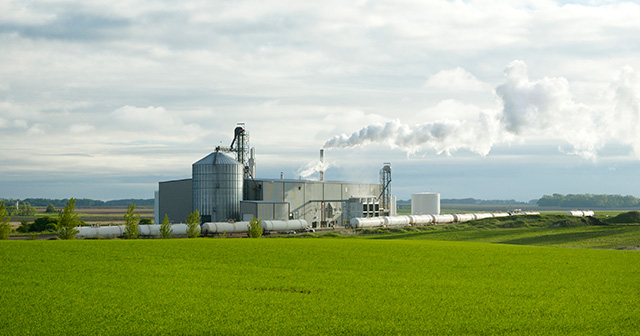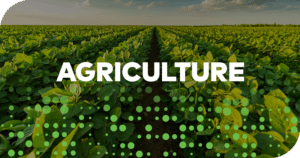Three Types of Data Biofuel and Ethanol Producers Need Now for 45Z

The 45Z Clean Fuel Credit for clean transportation fuels announced by the Biden administration in 2023 offers enormous benefits all along the transportation value chain. It provides incentives for the agriculture sector to increase sustainable farming practices; it is poised to reduce biofuel and ethanol production costs while increasing profit margins; and helps lower greenhouse gas emissions across multiple sectors.
Biofuel and ethanol producers should be securing data now to capitalize on the limited time window.
While the tax credit doesn’t go into effect until January 1, 2025, biofuel and ethanol producers should be securing the data and insights they need now to be prepared to capitalize on the limited time window. Here are three critical types of data necessary to be ready for the 45Z Clean Fuel Credit.
Sustainable Farming Practices Within a Sourcing Region
It takes three to five years to transition a field from conventional to regenerative agriculture systems according to a report by the Boston Consulting Group and the World Business Council for Sustainable Development. Farmers who will be ready to sell their corn and soybean crops at the start of the program are already using and tracking sustainable practices for the 2024 harvest.
While sustainable farming is increasing, a recent United States Department of Agriculture census report found that less than 18% of farmers report using the main practices of cover crop and low-to-no till. This further limits supply in a soon to be high-demand market for the low carbon feedstocks.
These factors point to why renewable fuel producers need to find and connect with farmers using sustainable farming practices now. A third party, such as a grain marketer can help source sustainable grains. Also, ethanol and biofuel contractor can contact local agricultural organizations or research institutions. A quicker and scalable solution is to work with a company that offers commercial agriculture data that can help the organization find suppliers within their region or specifications.
As digital marketplaces that link biofuel and ethanol refineries to farmers come online, renewable fuel producers will have even more direct access to the sustainable feedstocks they need.
Specific Types of Sustainable Practices
Part of the 45Z tax credit is based on the carbon intensity (CI) of the grain. CI is a measure of how much greenhouse gas emissions are produced per unit of energy or economic output. The CI of a crop significantly depends on numerous factors, such as yield, fertilizer use, tillage, and cover crops, and vary by field-level and region.
As digital marketplaces come online, renewable fuel producers will have even more direct access to the sustainable feedstocks they need.
Farmers can calculate their own CI score using publicly available calculators like the American Coalition for Ethanol and the National Sustainable Agriculture Coalition. To get their CI score, they are required to provide: location, yield, fuel usage/energy usage, fertilizer, herbicide, insecticide, tillage, and cover crop information on their fields. Biofuel and ethanol producers who need to be confident of the CI scores within their supply agreements may want to access more detailed insights like EcoField data from DTN. The field data includes 50 sustainable ag indicators including fertilizer specifications and application rates, irrigation practices, drying techniques, pesticide application practices, soil moisture levels, crop residue management, nitrification inhibitor tracking, soil organic matter metrics, and beyond. EcoField data can also be modeled to evaluate farm emissions delineated by their origin.
Since a portion of the tax credit is based on the CI score of the grain – from $0.20 to $1.75 per gallon, depending on the type and CI of the fuel – every point is valuable. Confidence in these measurable inputs and outputs can have a significant financial impact.
Verified Data Necessary for GREET
The underpinning of the 45Z tax credit depends on the accuracy and verification of the carbon intensity score. The U.S. federal government has determined that the Greenhouse Gases, Regulated Emissions, and Energy Use in Transportation (GREET) model, developed by Argonne National Labs, can determine CI scores for 45Z calculations. Grasping the methodology behind sustainable farming practices is not just a matter of technical compliance; it is essential for leveraging the 45z tax credit effectively, ensuring that the environmental benefits of such practices are recognized and rewarded.
The CI score of feedstock contributes to the amount of tax credit and could have significant financial impact.
There are multiple methods to track and validate sustainable farming practices, including surveys, first -person interviews and soil samples at the field level. Since it is impossible to cover 100% of all farming activities at a national and scalable level, advanced models and simulations are also used to analyze and predict the effects of different scenarios and inputs on the sustainability of farming systems.
This brings up different challenges in data quality and interpretation and underscores the importance of expert analysts overseeing data collection, processing, and reporting. Some carbon impact models use a small sample size of fields with a region and extrapolate the findings to represent the entire country. Other models hyper-focus on a specific region, which provides an analysis of the area but are challenging to achieve the adoption necessary to achieve large-scale soil health benefits.
The best way to validate sustainability data in farming is by using multiple and complementary methods from trusted sources. EcoField uses aggregated data derived from private and public sources, as well as interviews, field-sampling, and modeling of fields across all the major agriculture states. This robust input of aggregated data provides in-depth inputs to better model delivers the critical inputs and outputs that ethanol and biofuel producers, can be confident in their ability to measure environmental impact, and ultimately, they can be better prepared to optimize the 45Z tax credit.
The best way to validate sustainability data in farming is by using multiple and complementary methods from trusted sources.
The phrase “time is money” is highly relevant when it comes to getting the right data at the right time to maximize the new clean fuel regulations and incentives. Find out how EcoField can deliver the data needed now to help renewable fuels producers prosper in the clean energy transition.










 Comprehensive weather insights help safeguard your operations and drive confident decisions to make everyday mining operations as safe and efficient as possible.
Comprehensive weather insights help safeguard your operations and drive confident decisions to make everyday mining operations as safe and efficient as possible.

